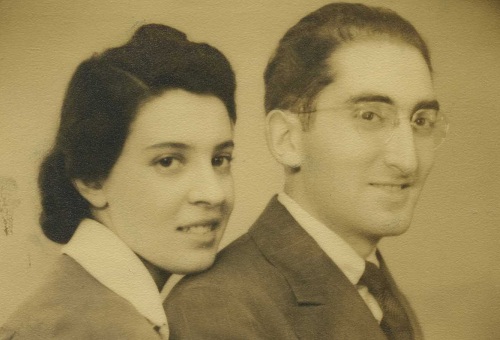David Harris

Giving Strategies: It’s Not Out of Reach: How Legacy Giving Is Much Easier Than You Realize
But when you are asked for a legacy gift, how do you make the calculation? What is it that you look at? Since most legacy gifts are set up in a will, or as a beneficiary of a retirement fund or life insurance policy, it’s literally impossible to calculate what you will accumulate over the course of your life, and what needs you or your loved ones will have over that time, not to mention any curveballs life might throw at you.
“The thing that’s important to understand about legacy giving is that it’s completely different than annual giving,” said Deb Steinbuch, Director of Planned Giving and Endowments and Create Your Jewish Legacy at the Jewish Federation of Cincinnati. “Nobody is asking you for an exact pledge—that is actually pretty rare. Much more common is to set an indefinite amount—often a percentage—which gives you the flexibility and reassurance that you will have access to whatever you need in your lifetime. You leave a portion of what’s left to the community and those in need.”
One day in January of 2016, the Jewish Federation received a call from the executor of Lily Liebman’s estate with news of a sizable legacy gift she had left for the Jewish community. Lily was living a humble but comfortable life in Wyoming before her passing, drawing off her investments and retirement funds. She and her husband Eric, both refugees from Nazi Europe, had worked their entire adult lives in Cincinnati in wholesale clothing—a replica of a family business in Vienna.
Eric and Lily gave every year to the Jewish Federation’s annual campaign, and likely other organizations, modest amounts, but Lily clearly saw the potential impact she could make when she didn’t need to live off her investments any longer. She ultimately gave most of her significant wealth to Jewish organizations. She and Eric are now changing hundreds of lives, year after year, in perpetuity.
Lily led a frugal life in all respects. But she invested wisely in the stock market and accumulated substantial holdings, which might not be the case for everyone. What is true for most of us, however, is that, when all is said and done, the totality of our assets is more than we think—and more often than not, much will be left over.
Bob Brant is an estate attorney at Katz Teller. The approach he takes with his clients focuses on taking out all the variables—the “what ifs,” as he calls them—and thinking about what it is you want to achieve for your family, your loved ones, your community, and the world. “Set a plan based on what you know now, and then revisit it every couple of years. The charities understand that, if your circumstances change, you may need to reduce your legacy gift,” Brant advises.
Robert Klein, a financial advisor at Baird, echoed Brant’s perspective. “It’s my job to make sure my clients have enough for retirement and plan accordingly so they can take care of themselves and their loved ones. We all use financial simulations that are important and useful, but can never predict perfectly what life brings to us.”
Klein differentiates between two types of clients. There are the clients who want to make a specific gift—like he and his wife, Marcy. They set up a donor-advised fund earlier this year and plan to make a legacy gift with the principal amount. And then there are clients who set up organizations as beneficiaries of their retirement funds, and if they need that money over the course of their lifetime, there will be no gift—and that’s okay. The organizations they commit to understand this.
From his experience, Brant said it is pretty common for legacy gift commitments to change over time. If it’s set as a percentage, that naturally varies with the amount in the estate, but also, a client can always decide to change their plan to account for new situations.
“I like to ask my clients, ‘What do you or your kids need?’” said Brant. “This is the most important thing. If you don’t have any extra, then you don’t make any gift provisions. Most of us have more than we think. When we put pen to paper and add up all their assets, most of my clients realize they can take care of their family and make a meaningful gift to the community. And this is what we mean by legacy.”
“I work primarily with Silver Circle donors—people who have been giving to the Jewish Federation Annual Campaign for 25 years or more. That’s a long time! It doesn’t matter the amount; it adds up,” said Reagan Kuhn, Senior Development Officer at the Jewish Federation. “For many of these community members, a legacy gift first seems out of reach. But it is actually the most significant gift they make.”
Personal worth. Impact. Legacy. These are the critical things to consider when you sit down with your estate planner or financial advisor and develop goals for the best way to use your assets. You are likely to find that you can make a much bigger gift than you might have thought possible—a gift that can last forever.
Thanks for caring about our community and what we do.
Stay connected: sign up for our newsletter here.

